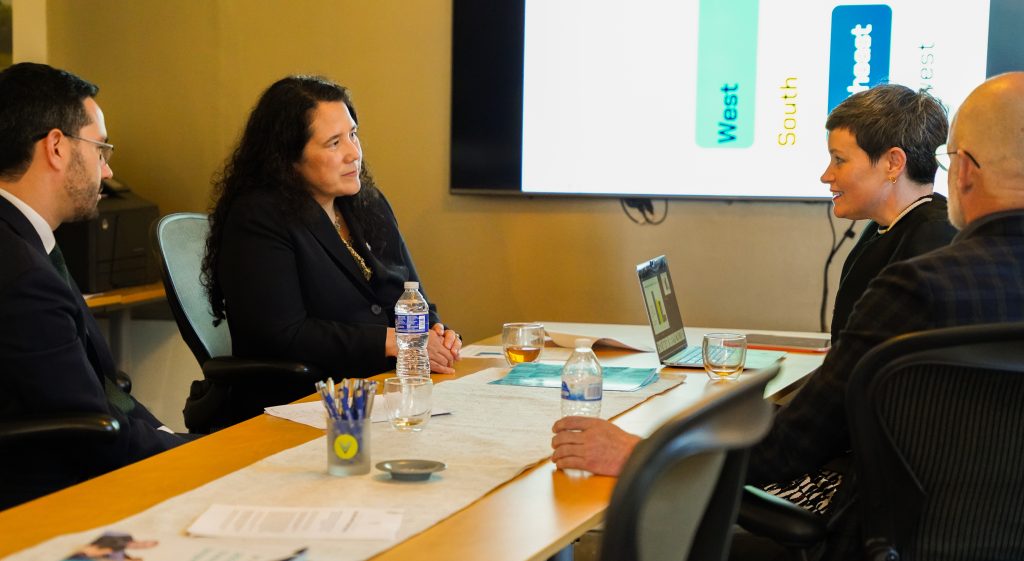New heights of wealth creation and prosperity are within reach of America’s increasingly tech oriented small business owners.

Administrator Guzman and David Brown of SBA with Lisa Calhoun, Gary Peat | Valor Offices
To unlock it for the challenges of our transition to a minority-majority country, we need a new funding model from SBA, SBIC, and SBIR.
Our team was thrilled to have the honor of an in person visit with Administrator Guzman on her recent listening tour in Atlanta. We sat down in Valor’s offices, where we have a burning phoenix on the wall–the symbol of Atlanta and a fitting symbol for the ups and downs of entrepreneurship.
Valor posed 3 burning questions for the SBA
- Startups, which are a type of small business and squarely in the purview of the SBA, are the #1 creator of new wealth in the United States.
Over the last 40 years, startups have contributed approximately 80% of the new wealth created in the U.S. Venture capital has backed 57% of the market cap of the US economy. To date, with less than 5% of venture capital finding founders who are women or of color, there’s a profound mismatch between our small business software founders and capital markets.
- Is this a lever the SBA is properly capitalizing, and/or properly addressing given its outsize benefit to the entire US population and economy?2. The US South, according to the recent census, is the largest region in the country with 40% of the US population. The census South is the bellwether for the US economically in our transformation to a minority majority society.
- Is this lighthouse region, unique in its diversity, properly funded and addressed at the small business level given the outsize future impact of strategies incubated here? 3. What achievable approaches could SBA enact that would accelerate risk capital into appropriate local hands in key economies in the South, where there is the time-sensitive opportunity to create more wealth and prosperity more EQUITABLY across the diverse American experience?
Solving for Stronger Small Business: 3 Suggestions for SBA, SBIR, and SBIC
We shared the following three potential solutions with SBA for the issues we’re all facing around properly supporting an increasingly technical small business base.
- Engage local, proven seed venture capital managers with a history of seed capital in the SBIR process, which invests ~$4B a year.
-
- The SBIR program is typically overseen by the program managers at each of the participating federal agencies–consider having another arm that does seed venture in key areas of interest to SBA.
- Allocate $500M for 2023 to emerging seed managers with less than $100M AUM
- Make this “qualify and get the capital,” up to to 10% of the fund, instead of a two stage process that requires SBA plus fundraising from banks.
2. Simplify the process for banks to invest in venture capital at the small business stage.
-
- Grant CRA credits at an advantaged rate, for investing in an SBIC fund of funds for emerging managers in key geographies with demographic oversight. I do not mean demographic advancement, just information rights.
- To create equitable new wealth from startups, make a history of racial and gender inclusion part of the selection process: not an outcome of the process, but an input.
3. Require locally-appropriate gender and ethnic diversity in your granting institutions at the state and local levels before funding. These types of requirements will do a great deal to forward equitable wealth creation.
“Here’s what I didn’t expect from Administrator Guzman,” Lisa said after the visit. “She’s amazing. I think she gets it. It’s tough turning a ship the size of the US small business economy–but it needs to happen to continue the American Dream. If anyone can do it, she can–and I’m 100% with her on it.”

